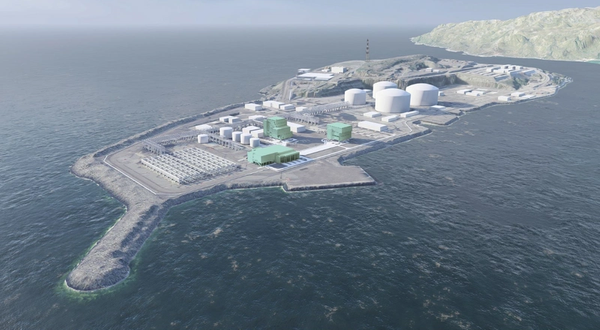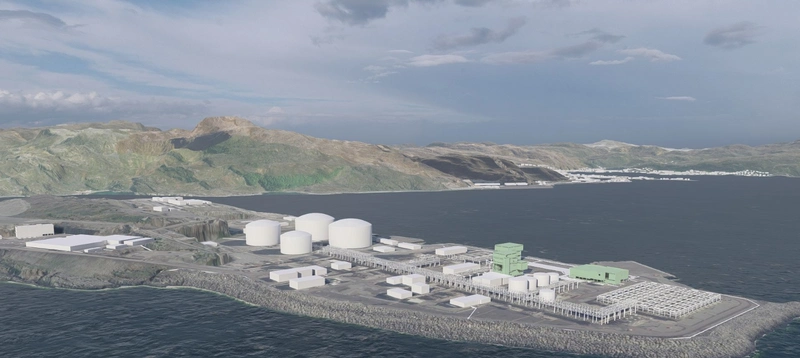
Norwegian oil and gas company Equinor, on behalf of its partners in the Snøhvit offshore gas field in the Barents Sea, on Tuesday submitted a plan for development and operation (PDO) of Snøhvit Future to the Norwegian Minister of Petroleum and Energy.
The Snøhvit field lies in the central part of the Hammerfest basin in the southern part of the Barents Sea, in a water depth of 310 meters.
The Snohvit Future project involves upgrading the Hammerfest LNG Plant at Melkoya island, through which the Snohvit field has been developed, sending gas through a 143-kilometre pipeline.
The Snøhvit partners will invest NOK 13.2 billion (2022) (currently around $1,33 billion) in upgrading the Hammerfest LNG plant, HLNG, at Melkøya island. The project involves onshore gas compression and electrification and will secure the future of HLNG, Equinor said.
Snøhvit Future Project consists of two developments: Snøhvit Onshore Compression and Snøhvit Electrification. The development covers: 1) the onshore compressor, transformer station and electric steam boilers on Melkøya, 2) the grid connection including a transforming station at Hyggevatn, and 3) the development of new power capacity from Skaidi to Hammerfest.
Onshore gas compression will provide enough flow from the reservoir to extend plateau production and maintain high gas exports from HLNG beyond 2030. Electrification will reduce CO2 emissions from HLNG by around 850,000 tonnes per year.
Geir Tungesvik, Equinor’s executive vice president for Projects, Drilling & Procurement said:"Snøhvit Future will strengthen Norway’s position as a reliable and long-term supplier of LNG to Europe. Electrification will allow us to deliver this gas with close to zero greenhouse gas emissions from production. The project will secure long-term operations and gas exports from Melkøya towards 2050."
 ©Equinor
©Equinor
During normal production conditions, HLNG delivers 18.4 million standard cubic metres of gas per day, or 6.5 billion cubic metres per year. This is equivalent to the energy demand of around 6.5 million European households, or 5% of all Norwegian gas export.
Three large modules will be installed at the plant, which will also be subject to extensive modifications.
In addition, Equinor said, there will be a high activity level in the Hammerfest region, such as the construction of a tunnel and a transformer station to bring electric power to Melkøya.
Higher demand for power to HLNG will trigger Statnett’s construction of a 420 kV power line from Skaidi to Hyggevatn and the Snøhvit partners will provide a considerable investment contribution, Equinor added.
The new line will strengthen the power infrastructure by providing higher grid capacity to Hammerfest, paving the way for new industrial developments in the area, the company said.
Power from Shore to Replace Gas Turbine Generators
“We are converting to electric operation at Melkøya, thereby reducing annual emissions of CO2 by around 850,000 tonnes. This is one of the largest individual emission reduction measures for decarbonization of oil and gas production in Norway. The project is a key contributor to the energy transition,” says Grete B. Haaland, senior vice president for Exploration and production north.
Electrification entails replacing the current gas turbine generators with power from shore. This will cut emissions equivalent to 13 per cent of the oil and gas industry’s overall 55 per cent emissions reduction by 2030. The project’s emissions reductions correspond to two per cent of Norway’s annual emissions, Equinor said.
Equinor said that the project would generate considerable ripple effects in terms of employment as well as local and regional service deliveries.
"Around 70 percent of the value creation in the development phase is expected to come from Norwegian companies. More than a third of this will go to Northern Norway," Equinor said.
“The Snøhvit Future project underlines our commitment to the North. It is crucial to secure operation and maintain existing jobs on Melkøya. In the development phase we estimate additional regional employment of around 1680 full-time equivalents. We are focusing on meeting the ambitions of North Norwegian content in the contracts to be awarded in the project phase towards operation start in 2028,” continues Haaland.
As a result of the Snøhvit Future development, the operations phase of the plant is expected to be extended by 10 years while maintaining current levels of employment. According to Equinor, the plant currently has 350 employees as well as around 150 contractors and apprentices.
Onshore compression and conversion to electrical operation of HLNG are scheduled to start in 2028.



